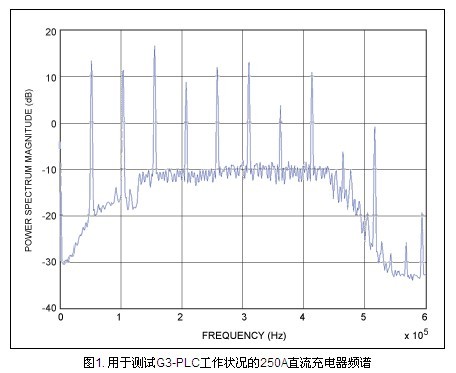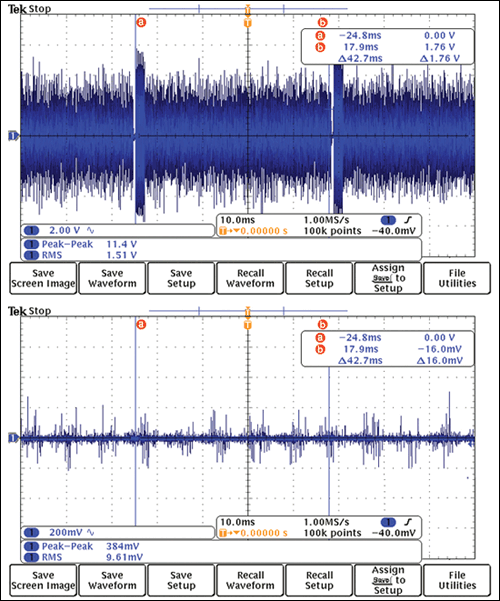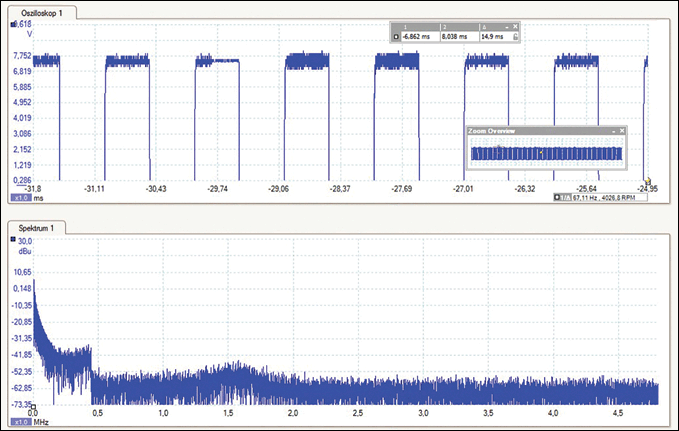Abstract: This paper analyzes the standard requirements for reliable communication between electric vehicles (EV) and electric vehicle power supply equipment (EVSE). The data shows that the G3-PLC system fully meets the communication standards of the automotive and power industries. The G3-PLC solution, which has been tested and tested around the world, is the best low-frequency communication solution.
This article refers to the address: http://
Electric vehicles (EVs) and plug-in hybrid vehicles (PHEVs) are forming an unprecedented and dynamic mobile power consumer market, and the relationship between power providers (electricity companies) and car owners is becoming increasingly clear. Many power companies have or are planning to offer EV users special rate standards, including fixed monthly rates.
EV has injected new vitality and demand into the electricity market. In fact, the interdependence between EVs and energy providers has begun to take shape. Since the EV has a large energy storage capacity, usually 10 kVH, it is necessary to absorb 80 A or more of current in a few hours. This puts significant pressure on the grid equipment, especially for low-voltage transformers, which may overheat or even fail when powering the user's home. In addition, the electric energy of the EV reserve can also generate current backflow and deliver electric energy to the grid to solve the power demand during the peak period of power supply and avoid starting the diesel generator with high carbon emissions.
In order to establish this new type of interaction, EVs and energy providers must communicate with each other. Power companies must be able to identify each vehicle and need to measure the flow of electricity and electricity through two-way communication. To meet this new market demand, standards organizations including the Society of Automotive Engineers (SAE), the International Organization for Standardization (ISO) and the International Electrotechnical Commission (IEC) have begun to develop EVs and charging stations (called electric vehicles). Communication unit, EVSE) communication standard. Integrating this secure, reliable two-way communication capability into current power supply systems involves a number of key issues. At the same time, as EV charging becomes a key industry demand, the new G3-PLC for smart grids stands out as the leading technology for harnessing power line communication to manage grid energy.
This paper analyzes the key requirements of reliable EV-EVSE communication. The data shows that the G3-PLC system fully meets the new standards of the automotive and power industries. The G3-PLC solution, which has been tested and tested around the world, is the best low-frequency communication solution.
EV-EVSE communication standard
In the past three years, auto manufacturers have investigated and tested various EV-EVSE communication solutions. Recently, the Auto Union has also locked its test results in two power line communication (PLC) solutions, with G3-PLC as the low-frequency communication option. A set of practical communication solutions faces many challenges, and designers are actively exploring any feasible solutions.
The key principles to be followed in communication solutions are:
â— Reliability - reliable data communication and components that meet automotive-grade requirements
â— Meet EMC, joint interference and crosstalk restrictions
â— Compliance with worldwide power line specifications
â—Work through the control line
â—Working in an AC or DC grid
â— Provide secure networking support for energy management systems
In addition, automotive solutions present special challenges for IC designers and manufacturers. The IC must be able to withstand the harsh working environment and must work reliably for 10 to 20 years to meet the relevant certification/quality assurance system requirements of the vehicle.
G3-PLC - the best choice for EV-EVSE communication technology
For some time, while the automotive industry is investigating, the power industry is also developing a high-reliability G3-PLC solution with a service life of up to 10 years. These results have been supported by the world's largest power companies, including the French Power Group (EDF). G3-PLC power line modems have been introduced to operate in harsh environments with negative signal-to-noise ratio (SNR). No matter how important the emphasis on G3-PLC technology is, it has become the key to ensuring reliable communication in any EV-EVSE condition.
The results of the independent DC charging test funded by the US Department of Energy in 2009 proved the difficulty faced by EV-EVSE communication. The test results show that Maxim's G3-PLC power line modem has highly reliable communication capability and can adapt to any working conditions.
Strong noise charging cable
Most independent PLC solutions operate at lower currents, and the G3-PLC is the only PLC system capable of reliable communication at 250A. The test data (Figure 1) shows that the noise may be 20 dB or more higher than the signal; in addition, the noise frequency generated by the switching power supply is different, depending on the particular switching power supply used. The G3-PLC system uses proprietary technology to cope with harsh environmental conditions, including reliable operating modes (robo mode), adaptive frequency mapping, two-level error correction, and two-dimensional comb filtering. These functions are described in detail in the IEEE ISPLC literature and verified in the field. G3-PLC enables reliable data communication across transformers.

EMC suppression
Prior to the introduction of the G3-PLC transceiver, electromagnetic compatibility (EMC) has been a major obstacle to the use of PLCs for outdoor communications. However, the G3-PLC system overcomes the challenge of EMC because it operates at lower frequencies (below 500 kHz) and is designed for smart grids around the world. In fact, preliminary tests have been shown in the low frequency band (500 kHz) and the EMC level is below the CISPR-25 limit threshold, as evidenced by subsequent trials.
Joint interference and crosstalk
Normally, the charging station charges multiple electric vehicles arranged in parallel, and if a communication error occurs, a billing error will result. Therefore, joint interference and crosstalk become the main concern indicators of the EV-EVSE network. The automotive industry initially considered the use of wireless communication solutions in this application, but it turns out that this solution does not guarantee reliable joint charging.
The PLC ensures that the EV being charged is correctly billed, and G3-PLC technology is used to solve this problem. When the EVSE switch is turned off, communication is not possible (Figure 2), ensuring that it is not possible to communicate via open contact or to communicate between charging lines in an EVSE with multiple charging lines. This function was further confirmed in the recent ISO 15118 PT4 test, which increased the G3-PLC signal to 10 times the normal operating level to introduce crosstalk. Crosstalk was not detected under nominal conditions or even more noisy working conditions.

Figure 2. When using G3-PLC, the transmit and receive signals indicate that there is no communication data between the open contacts. Globalization is a key goal for automotive manufacturers. The G3-PLC system has been extensively tested in many regions around the world, operating at 10 kHz. Licensed bands authorized by countries up to 500 kHz. To support regional differences in licensed bands, the Maxim G3-PLC solution provides programmable features to meet deployment area regulations. Thus, in the European power company's test, the G3-PLC system was programmed in the CENELEC A band (up to 95 kHz); in the US test, the G3-PLC was set in the FCC band (up to 490 kHz), and in Japan the ARIB band ( Up to 450kHz).
Working on the control line
G3-PLC transceivers need to overcome more design challenges when working on control lines. In order to meet the SAE J1772 specification, there are two key factors to be aware of when working on the control line: ultra-low voltage and coupling issues to avoid PWM interference. Considering the robust nature of the G3-PLC system, operating at low voltage (and low current) conditions is not a problem. Figure 3 shows that it can work normally below 500mV without packet loss or retransmission.

Figure 3. G3-PLC signal waveforms for inductive coupling on the control line, indicating that it supports PWM and PLC communication.
In addition, care must be taken to avoid PWM signal overload (which adversely affects slew rate) and to avoid PWM harmonics from 1kHz, 12V signals. In order to ensure that the PWM signal band does not overlap with the G3-PLC transmission band, the G3-PLC system is set to operate above 150 kHz. In order to ensure that the PWM slew rate is within the limits of the system, inductive coupling is preferred (better than capacitive coupling).
Versatility brings more possibilities
The G3-PLC solution has been extensively tested by many power companies worldwide as an AC power solution. The test results sponsored by SAE show that the G3-PLC system can send tens of millions of vehicle power data with zero error. Since the G3-PLC system can operate on both powered and unpowered lines (AC grid, control line, CAN or any medium), it provides reliable reliability.
The G3-PLC solution places great emphasis on advanced meter infrastructure (AMI), opening a new door for EV-EVSE communication on the AC grid: the G3-PLC system can communicate directly with the meter. Figure 4 shows the complete ecosystem that G3-PLC can support. It is expected that the EVSE in the home will have an independent, dedicated circuit breaker that provides direct access to the external power circuit breaker to avoid the effects of phase differences.

Figure 4. G3-PLC communication route from EV to power company
Some power companies have added IPv6 addressing to G3-PLC systems before the automakers requested it. In fact, as Stephen Shankland's article in ZDNet says, IPv4 addresses are almost exhausted, so supporting IPv6 is a top priority. The G3-PLC solution uses a 6LowPAN compression scheme to ensure true IPv6 addressing is supported. After the G3-PLC adopts a true IPv6 network, the PHY and MAC uncertain energy management solutions can seamlessly switch over the network.
Product Parameters
Description: Outdoor Bluetooth Speaker with Dazzling Light
Product dimension: Dia 155mm x H 45mm
Material: ABS+PC
Weight: 330g
LED Color: RGB+Warm White
LED Power: 0.5W
Speaker Power: 5W
Lamp Current: 15-20mA
LED Qty: 8pcs RGB lamp beads+4pcs Warm White lamp beads
Battery Capacity: 3.7V, 1000mA (Li battery included)
Protocol: Bluetooth 4.1-CSR
Color of product: Dark Grey
Charging type: by a USB charger
Control Distance: 10m ( No obstacles)
Charging Time: 1.5 hours
Continue Use Time: 3-5 hours
Packing: Each in a color box
Waterproof Index: IP44
Warranty: 1 Year
Certification: CE (EMC,RED) ,ROHS, SCC, BQB,FCC
Suitable Occasions: Outdoor, especially when camping and working in the garden
Color box size: 22.2*20.6*5cm
G.W. of Unit: 0.52kg
N.W. of Unit: 0.33kg
Introduction
We combine the Bluetooth speaker with RGBW Light, one switch easy control four lighting modes: warm white lighting mode, no lighting mode, dazzling lighting mode, RGB lighting mode. High-quality speaker with loud, clear sound, combine with color lighting, the plastic sticker can be detachable, waterproof index is IP44, used in the bedrooms, gardens, and swimming pools.
The connection steps are very easy: turn on the speaker by pressing the button at the bottom, open the Bluetooth in the phone, wait for the Bluetooth to search the speaker, then connect successfully.
The Bluetooth Speaker With Light has four modes, can be pick by one button at the bottom of speaker.
The first mode, rhythm mode, light can jump with the rhythm of the music, initial light color is red;
The second mode is the color light auto-cycle mode, light can be automatically cycled, initial light color is yellow;
The third mode, the warm white lighting mode, the light color is warm white;
The fourth mode, speaker only mode, in which the initial light is blue, then slowly goes out, the music continue to play.

Garden Speaker With Light,Garden Landscape Lighting,Garden Speaker With Solar Light,Garden Light Speaker
Ningbo Homey Photoelectric Technology. Co., Ltd , https://www.linkuphome.com